Musical Polyglot
This module focuses on the the relations among musical notations, natural languages and world cultures. When studying for music theory from Grade 1 to 3, you may have learnt about some basic Italian terms that we use on music scores. In Grade 4 and 5 these have been expanded to some more terms in French and German. In the linguistic perspective, these different music terms may help you become a polyglot! In a musical perspective, it is necessary to learn about music terms from different language systems, considering that many classical music composers were often originated from regions where English were not the main language. These composers hence tend to use their own native languages when denoting the music they made.
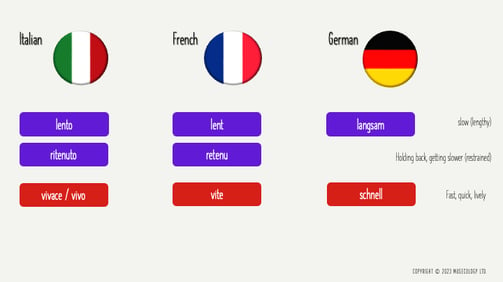

The first group of these musical terms to introduce here are about the ‘speed’ of the music, that is, how fast is the pace and the length of each beat of the note.
To indicate that the music should be played slowly, in Italian, we have learnt the term ‘lento (len’TOR), similarly in French, this term is called ‘lent’ (leng); slightly different in German, it’s called ‘langsam’ (LAANGsaam). An easier way to make sense of them is by their initial letter L, they actually represent a root of the meaning for ‘lengthy’ in English. To play the passage in a lengthy way, and hence it’s slower.
To indicate the music should be getting slower, in Italian, we have ‘ritenudto’ (ri·te·nù·to), and in French, it is looking very similarly as ‘retenu’. They both mean holding back and getting slower. As they both start with the letter R, they are linked to the word ‘restrained’ in English.
Opposite to slow, to indicate that the music should go fast or quickly, we have vivace or vivo in Italian. Very similarly in French, the term is vite, whereas in German it’s schnell.
Terms about tempo of the music
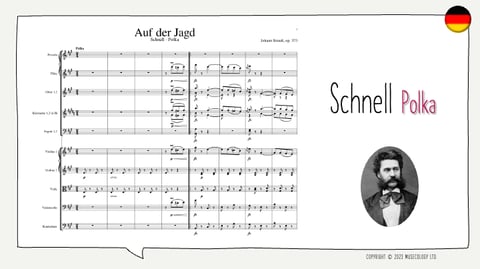

You can listen to some examples from our repertoire below to understand these foreign language terms.
Firstly, the Aug Der Jag by Stauss, it is very vibrant dance music (Polka) and is set to be quite fast paced. It is therefore as Schnell. Let's listen to it to see how it sounds like.
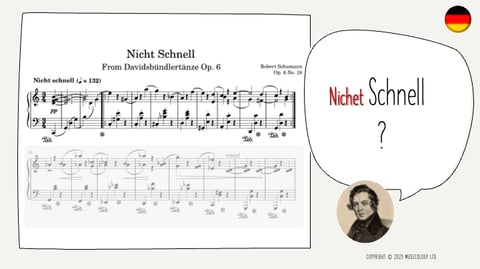

On the other hand, 'Nicht Schnell' refers to 'not quite fast' by adding 'nicht' to the term. Let's listen to this music by Schumann to find out what it means.
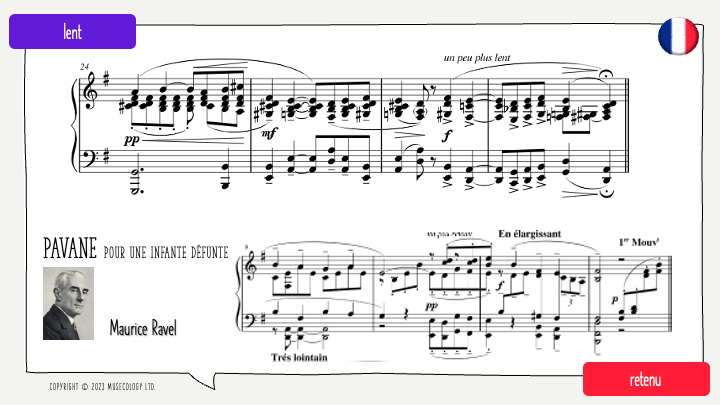

The French version of slow (lent) and getting slow (retenu) have been well presented in Ravel's 'pavane pour une infante defunte'.
We can focus on 0:46 of this music for the 'un per retenu' effect in the second half of Bar 10. Then at 2:07, the music gets 'un peu plus lent', a bit more slower at the second half of Bar 26.
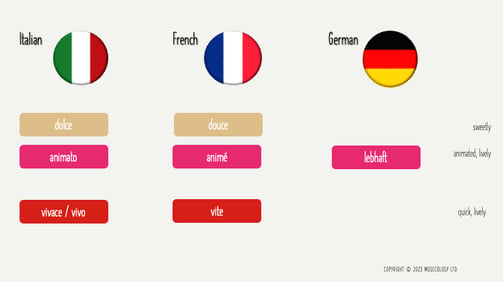

Another group of terms to introduce here is about the tone, musicality texture, and flow of the music, and how we as musicians can master playing the notes out of our instrument.
We shall play the music sweetly, when we see 'dolce' in Italian and 'douce' in French.
To play the music in a lively way, in Italian, it’s 'animato', and in French 'animé', which both sound like in English animated. This is often played in a similar way when we see the terms 'vivace', 'vivo' and 'vite'.
Let's focus on some practical examples below.
Terms about musicality
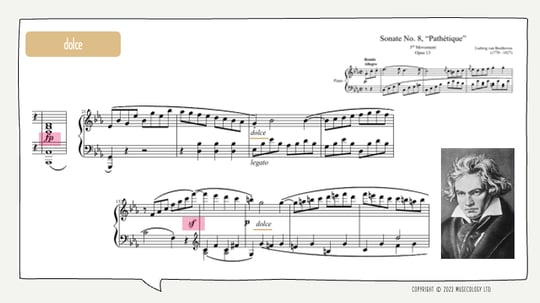

'Dolce' is quite commonly used for composers from different nations or cultures. Here in Beethoven's very famous piece of work the Pathetique 3rd Movement, 'dolce' is used to denote his music twice. You may already know that the Pathetique is a very dramatic music. The music does flows through in a strong persuasive way. Denoting 'dolce' here serves as a reminder for us to switch into playing it sweetly, more softly, after the strong forte movement ahead of it. It's quite tricky to create sudden quietness ('piano') after strong movements (with 'forte'), and immediately follow it with sweet 'dolce' moves.
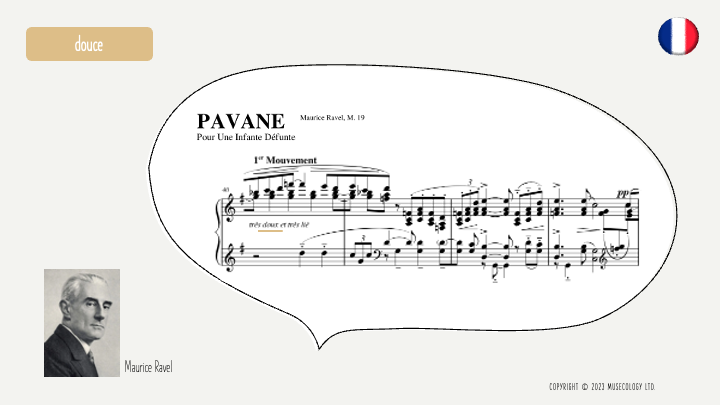

Again in Ravel's 'pavane pour une infante defunte', part of the music has been notated as 'très doux et très lié', which means very soft and connected in legatos.
We can focus on the part starting from 4 minutes 13 seconds of this music to listen to this effect on the music in its Bar 40.


Here we can listen to how 'lebhaft' sounds like, just from the opening of this music.
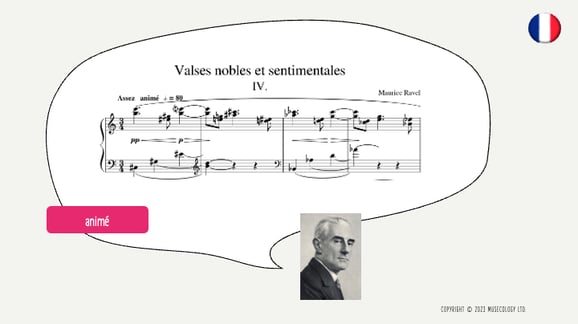

For the French version of this set of term 'animé', the lively light touch of waltz dance music by Ravel can demonstrate how it should sound like when we try to play this part of the music. It is from the 'Valses Nobles et Sentimentales' by Ravel.
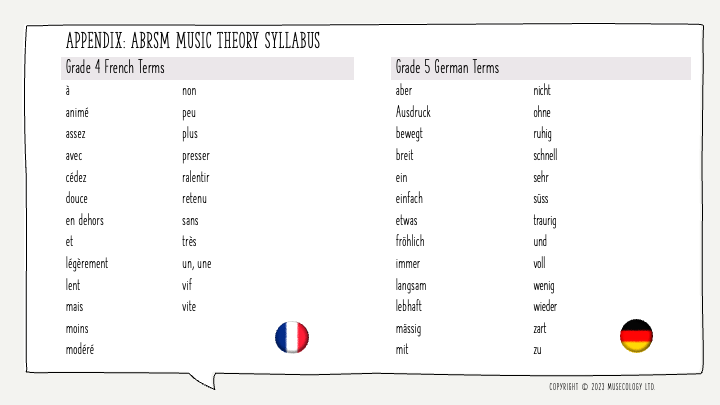

Lastly, in the ABRSM syllabus, these are all the terms we should tackle. Instead of forcing ourselves to memorise them, we can perhaps play them by ears and by practice. It is just high time to learn more French and German, isn't it ?

Contact Us
If you are interested to learn more about our works, welcome to get in touch with us at
Haylofts, 5 St Thomas' St, Newcastle upon Tyne, NE1 4LE (by appointment),
or by email to hello@ecomuse.co.uk .
© 2021 - 2025 Musecology Ltd. (UK Company No. 13806170)
